
How to Use ESP-32 DEVKIT-V1 Expansion Board: Examples, Pinouts, and Specs
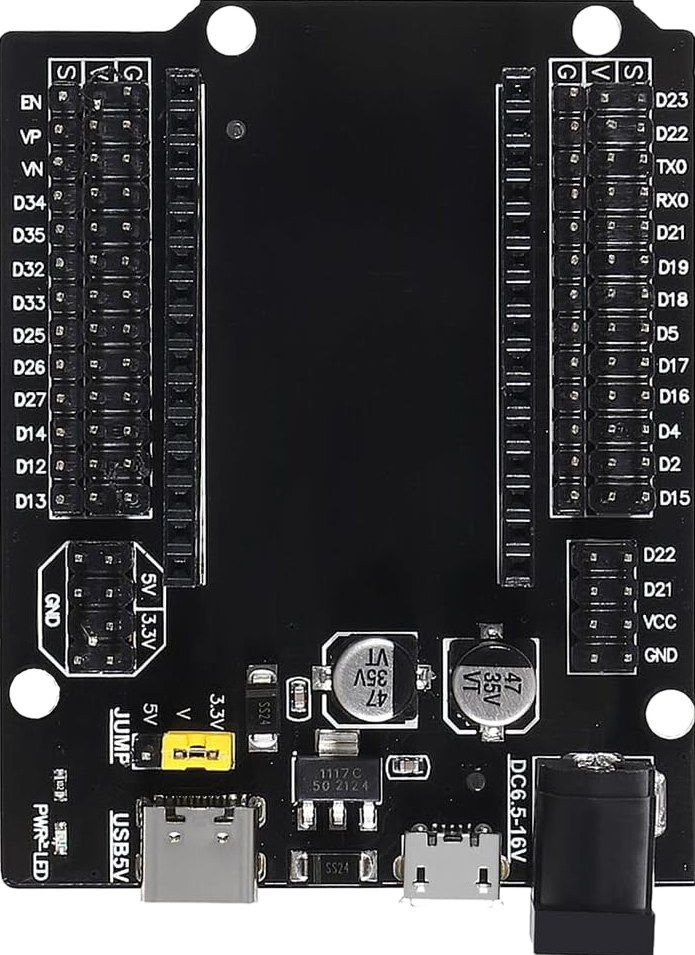
 Design with ESP-32 DEVKIT-V1 Expansion Board in Cirkit Designer
Design with ESP-32 DEVKIT-V1 Expansion Board in Cirkit DesignerIntroduction
The ESP-32 DEVKIT-V1 Expansion Board, manufactured by Espressif, is a versatile development board featuring the ESP32 microcontroller. This board is equipped with Wi-Fi and Bluetooth capabilities, making it ideal for Internet of Things (IoT) projects and rapid prototyping. The ESP32 microcontroller offers a rich set of features, including multiple GPIO pins, ADCs, DACs, UART, SPI, I2C, and more, providing a robust platform for a wide range of applications.
Explore Projects Built with ESP-32 DEVKIT-V1 Expansion Board
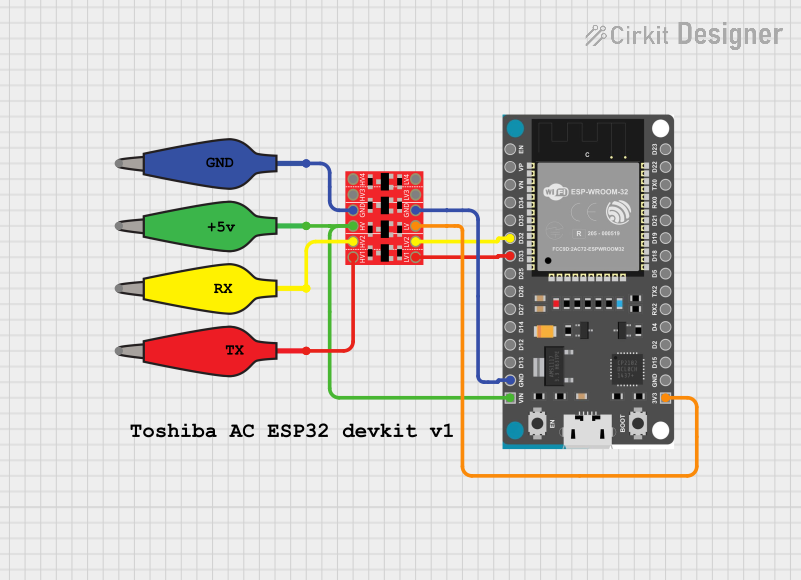
 Open Project in Cirkit Designer
Open Project in Cirkit Designer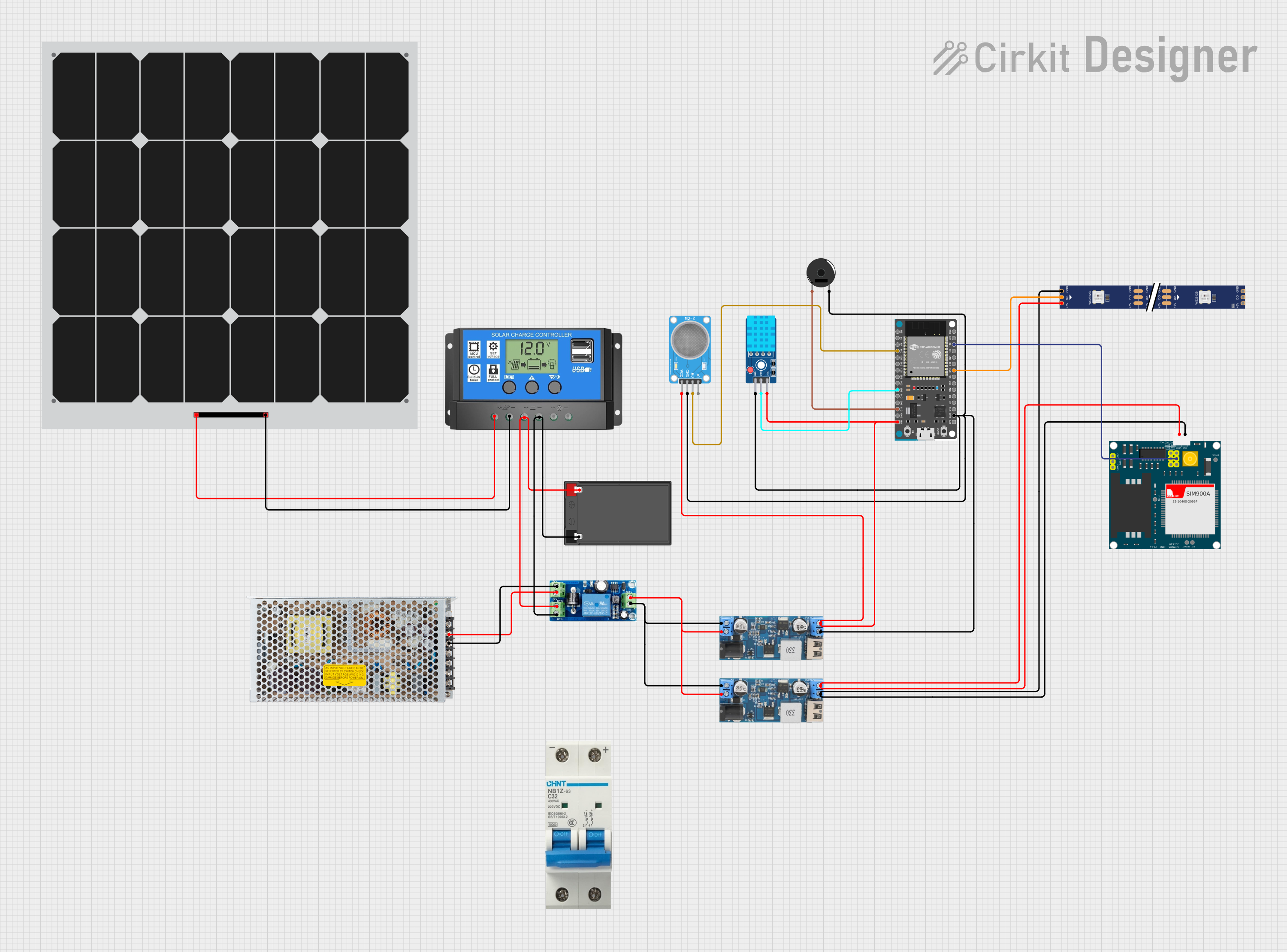
 Open Project in Cirkit Designer
Open Project in Cirkit Designer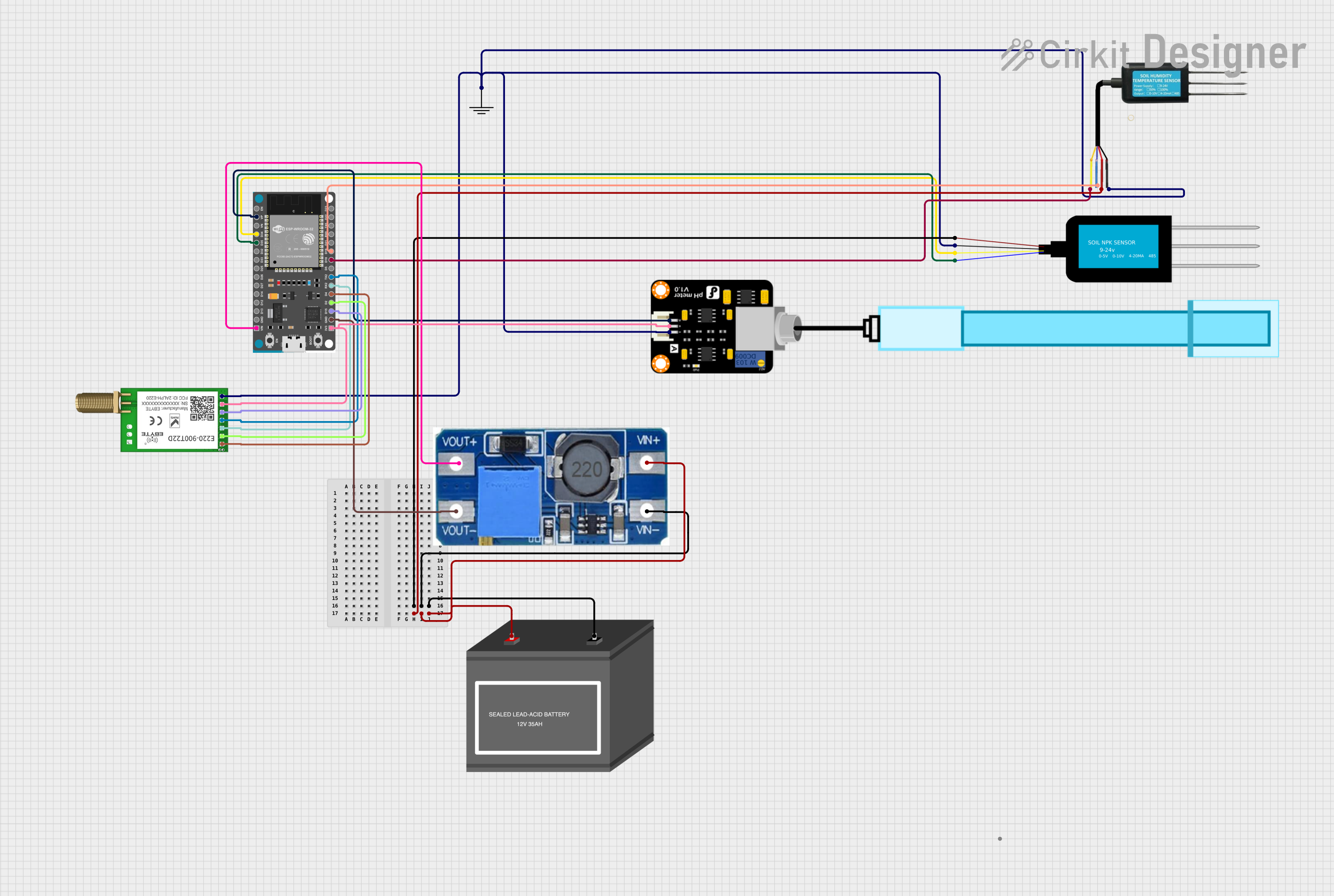
 Open Project in Cirkit Designer
Open Project in Cirkit Designer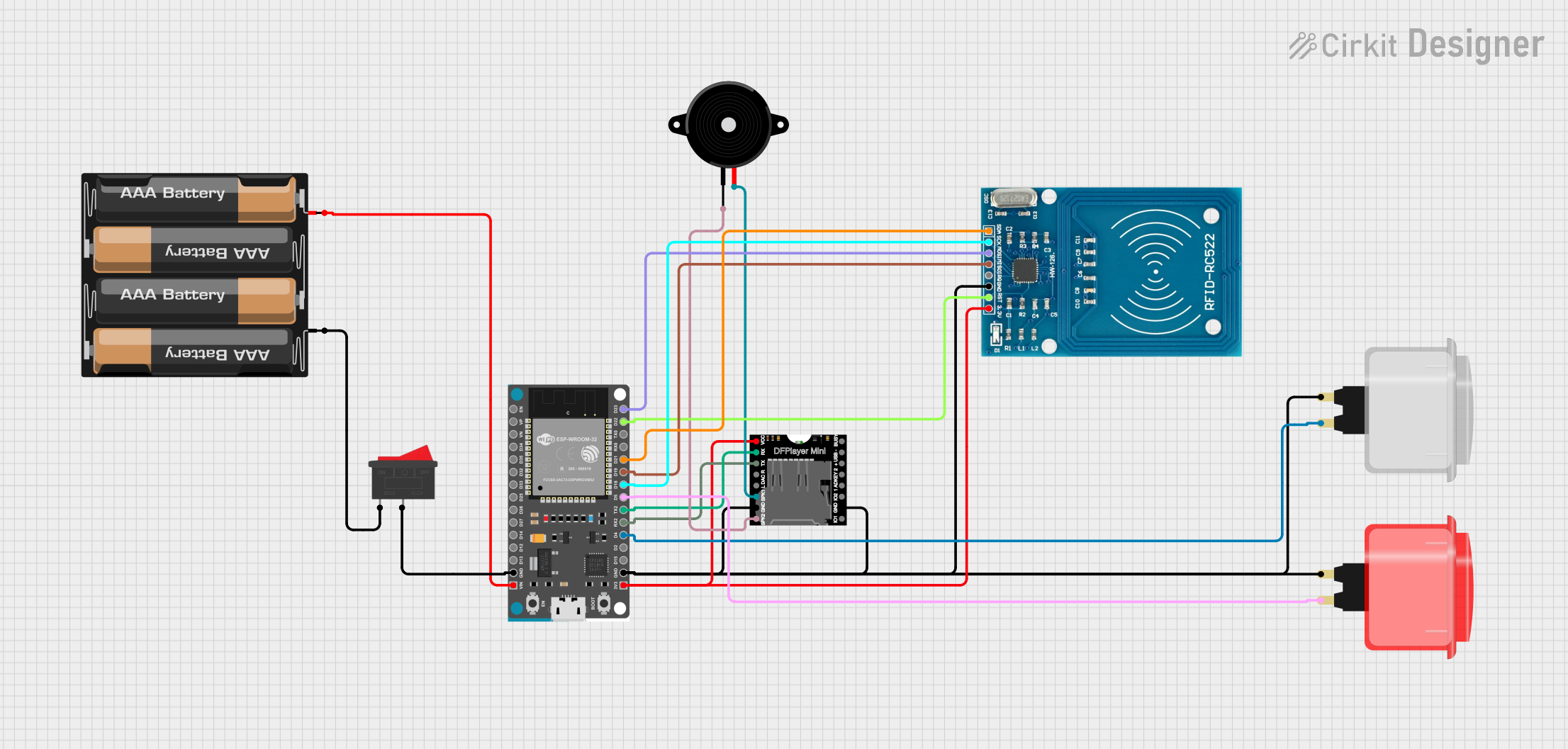
 Open Project in Cirkit Designer
Open Project in Cirkit DesignerExplore Projects Built with ESP-32 DEVKIT-V1 Expansion Board

 Open Project in Cirkit Designer
Open Project in Cirkit Designer
 Open Project in Cirkit Designer
Open Project in Cirkit Designer
 Open Project in Cirkit Designer
Open Project in Cirkit Designer
 Open Project in Cirkit Designer
Open Project in Cirkit DesignerCommon Applications and Use Cases
- IoT Devices: Smart home devices, environmental monitoring, and industrial IoT applications.
- Prototyping: Rapid development and testing of new ideas and projects.
- Wireless Communication: Projects requiring Wi-Fi and Bluetooth connectivity.
- Embedded Systems: Integration into larger systems requiring microcontroller functionality.
Technical Specifications
Key Technical Details
| Specification | Value |
|---|---|
| Microcontroller | ESP32 |
| Operating Voltage | 3.3V |
| Input Voltage | 5V (via USB) |
| Digital I/O Pins | 34 |
| Analog Input Pins | 16 (12-bit ADC) |
| Analog Output Pins | 2 (8-bit DAC) |
| Flash Memory | 4MB |
| SRAM | 520KB |
| Communication | Wi-Fi 802.11 b/g/n, Bluetooth v4.2 BR/EDR/LE |
| Interfaces | UART, SPI, I2C, I2S, PWM, GPIO |
| Dimensions | 54mm x 28mm |
Pin Configuration and Descriptions
| Pin Number | Pin Name | Description |
|---|---|---|
| 1 | EN | Enable (Active High) |
| 2 | IO36 | GPIO36, ADC1_CH0 |
| 3 | IO39 | GPIO39, ADC1_CH3 |
| 4 | IO34 | GPIO34, ADC1_CH6 |
| 5 | IO35 | GPIO35, ADC1_CH7 |
| 6 | IO32 | GPIO32, ADC1_CH4, Touch9 |
| 7 | IO33 | GPIO33, ADC1_CH5, Touch8 |
| 8 | IO25 | GPIO25, DAC1, ADC2_CH8 |
| 9 | IO26 | GPIO26, DAC2, ADC2_CH9 |
| 10 | IO27 | GPIO27, ADC2_CH7, Touch7 |
| 11 | IO14 | GPIO14, ADC2_CH6, Touch6, HSPI_CLK |
| 12 | IO12 | GPIO12, ADC2_CH5, Touch5, HSPI_MISO |
| 13 | GND | Ground |
| 14 | IO13 | GPIO13, ADC2_CH4, Touch4, HSPI_MOSI |
| 15 | IO9 | GPIO9, ADC2_CH2, Touch2 |
| 16 | IO10 | GPIO10, ADC2_CH3, Touch3 |
| 17 | IO11 | GPIO11, ADC2_CH1, Touch1 |
| 18 | IO6 | GPIO6, ADC2_CH0, Touch0 |
| 19 | IO7 | GPIO7, ADC2_CH10, Touch10 |
| 20 | IO8 | GPIO8, ADC2_CH11, Touch11 |
| 21 | IO15 | GPIO15, ADC2_CH12, Touch12 |
| 22 | IO2 | GPIO2, ADC2_CH13, Touch13 |
| 23 | IO0 | GPIO0, ADC2_CH14, Touch14 |
| 24 | IO4 | GPIO4, ADC2_CH15, Touch15 |
| 25 | IO16 | GPIO16, ADC2_CH16, Touch16 |
| 26 | IO17 | GPIO17, ADC2_CH17, Touch17 |
| 27 | IO18 | GPIO18, ADC2_CH18, Touch18 |
| 28 | IO19 | GPIO19, ADC2_CH19, Touch19 |
| 29 | IO21 | GPIO21, ADC2_CH20, Touch20 |
| 30 | IO22 | GPIO22, ADC2_CH21, Touch21 |
| 31 | IO23 | GPIO23, ADC2_CH22, Touch22 |
| 32 | IO5 | GPIO5, ADC2_CH23, Touch23 |
| 33 | IO3 | GPIO3, ADC2_CH24, Touch24 |
| 34 | IO1 | GPIO1, ADC2_CH25, Touch25 |
| 35 | IO30 | GPIO30, ADC2_CH26, Touch26 |
| 36 | IO31 | GPIO31, ADC2_CH27, Touch27 |
| 37 | IO28 | GPIO28, ADC2_CH28, Touch28 |
| 38 | IO29 | GPIO29, ADC2_CH29, Touch29 |
| 39 | IO20 | GPIO20, ADC2_CH30, Touch30 |
| 40 | IO24 | GPIO24, ADC2_CH31, Touch31 |
Usage Instructions
How to Use the Component in a Circuit
Powering the Board:
- Connect the board to your computer using a USB cable. This will provide the necessary 5V input voltage.
- Alternatively, you can power the board using an external 3.3V power supply connected to the 3V3 pin.
Programming the Board:
- Install the Arduino IDE and add the ESP32 board support via the Board Manager.
- Select "ESP32 Dev Module" from the Tools > Board menu.
- Connect the board to your computer and select the appropriate COM port.
- Write your code and upload it to the board.
Connecting Peripherals:
- Use the GPIO pins to connect sensors, actuators, and other peripherals.
- Ensure that the voltage levels of the peripherals are compatible with the 3.3V logic level of the ESP32.
Important Considerations and Best Practices
- Voltage Levels: The ESP32 operates at 3.3V. Ensure that all connected peripherals are compatible with this voltage level to avoid damage.
- Pin Multiplexing: Some pins have multiple functions (e.g., GPIO, ADC, DAC). Be mindful of the pin configuration to avoid conflicts.
- Power Consumption: The ESP32 can consume significant power, especially when Wi-Fi and Bluetooth are active. Consider power management strategies for battery-powered applications.
- Antenna Placement: For optimal wireless performance, ensure that the onboard antenna is not obstructed by metal objects or other components.
Example Code
Here is an example code to connect the ESP-32 DEVKIT-V1 to an Arduino UNO and read data from a DHT11 temperature and humidity sensor:
#include <DHT.h>
#define DHTPIN 4 // Pin connected to the DHT11 sensor
#define DHTTYPE DHT11 // DHT 11
DHT dht(DHTPIN, DHTTYPE);
void setup() {
Serial.begin(115200);
dht.begin();
}
void loop() {
delay(2000); // Wait a few seconds between measurements
float h = dht.readHumidity();
float t = dht.readTemperature();
// Check if any reads failed and exit early (to try again).
if (isnan(h) || isnan(t)) {
Serial.println("Failed to read from DHT sensor!");
return;
}
Serial.print("Humidity: ");
Serial.print(h);
Serial.print(" %\t");
Serial.print("Temperature: ");
Serial.print(t);
Serial.println(" *C ");
}
Troubleshooting and FAQs
Common Issues Users Might Face
Board Not Detected:
- Ensure the USB cable is properly connected.
- Check if the correct COM port is selected in the Arduino IDE.
- Try using a different USB cable or port.
Upload Failures:
- Press and hold the "BOOT" button on the board while uploading the code.
- Ensure the correct board and COM port are selected in the Arduino IDE.
Wi-Fi Connection Issues:
- Verify the SSID and password are correct.
- Ensure the Wi-Fi network is within range and not experiencing interference.
Solutions and Tips for Troubleshooting
- Reset the Board: Press the "EN" button to reset the board if it becomes unresponsive.
- Check Power Supply: Ensure the board is receiving adequate power, especially when using external peripherals.
- Update Drivers: Ensure that the USB-to-serial drivers are up to date on your computer.
By following this documentation, users should be able to effectively utilize the ESP-32 DEVKIT-V1 Expansion Board in